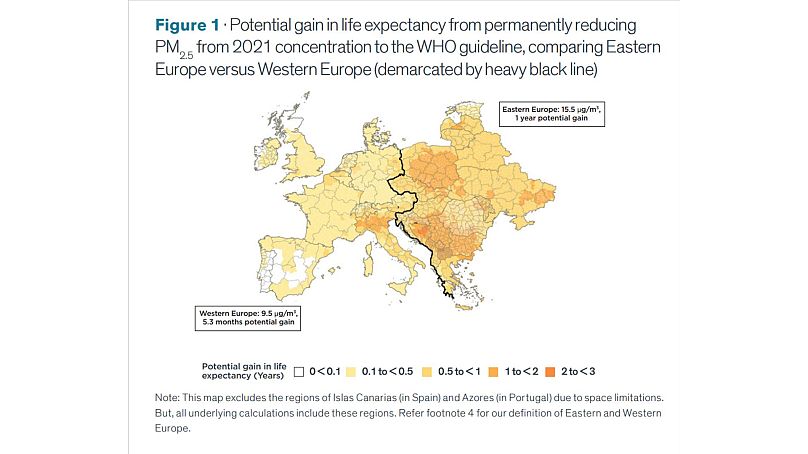Wildfires are exacerbating a huge threat to human health.
More dangerous than tobacco or alcohol, air pollution is exacerbated in certain regions of the world including Asia and Africa, according to a study out today.
"Particulate air pollution remains the world’s greatest external risk to human health", says the report issued by the Energy Policy Institute at the University of Chicago (EPIC).
Despite this, the funds allocated to the fight against air pollution represent only a tiny fraction of those devoted to infectious diseases, for example.
Fine particulate matter is caused by fires, industrial activity and motorised vehicles. They are carcinogenic and increase the risk of lung disease, heart disease and strokes.
According to figures from the World Health Organisation (WHO), 36% of lung cancers are linked to these emissions, as are 34% of strokes and 27% of heart disease.
Compliance with the WHO threshold for exposure to fine particles would increase global life expectancy by 2.3 years, EPIC estimates, based on data collected in 2021.
Eastern Europe more exposed to air pollution than its Western neighbours
"98.4 % of Europe still doesn’t meet the WHO’s new guidelines of 5 μg/m3", says the report.
In general, air quality has improved over the last few decades in Europe. But all these efforts are threatened by, among other things, the increasing number of wildfires around the world - caused by rising temperatures and more frequent droughts, linked to climate change - which cause peaks in air pollution.
But the picture varies across Europe: "Residents in eastern Europe are living 7.2 months less than their western neighbours due to dirtier air", EPIC scientists say.
The Po Valley, in northern Italy, is an example of highly polluted area. Residents life expectancy could improve by 1.6 years if pollution levels met WHO guidelines.
Bosnia and Herzegovina remains the most polluted country in Europe, where people lose 1.8 years of their life.
Six countries absorb three-quarters of the world's air pollution's impact.
Bangladesh, India, Pakistan, China, Nigeria and Indonesia are the most affected countries. Their inhabitants "lose one to more than six years off their lives because of the air they breathe", explains the report.
New Delhi remains the world's most polluted megacity with fine particulate matter annual average rate topping 126.5 μg/m3. WHO recommends keeping air quality under 5 μg/m3.
China, on the other hand, is working on its air quality. It has lowered average pollution by 42.3% between 2013 and 2021. "The average Chinese citizen can expect to live 2.2 years longer, provided the reductions are sustained. However, the pollution in China is still six times higher than the WHO guideline", says the EPIC report.
Few international measures to fight air pollution
What's not making it better, according to scientists at EPIC, is that many polluted countries lack basic air pollution infrastructure.
Asia and Africa "contribute 92.7% of life years lost due to pollution, yet, just 6.8 and 3.7% of governments in Asia and Africa, respectively, provide their citizens with fully open air quality data".
While the Global Fund spends €3.7 billion fighting HIV, tuberculosis or malaria, there is no such international plan to fight air pollution. And yet air pollution is deadlier to people living in the Democratic Republic of Congo or Cameroon than HIV, malaria or other diseases.












